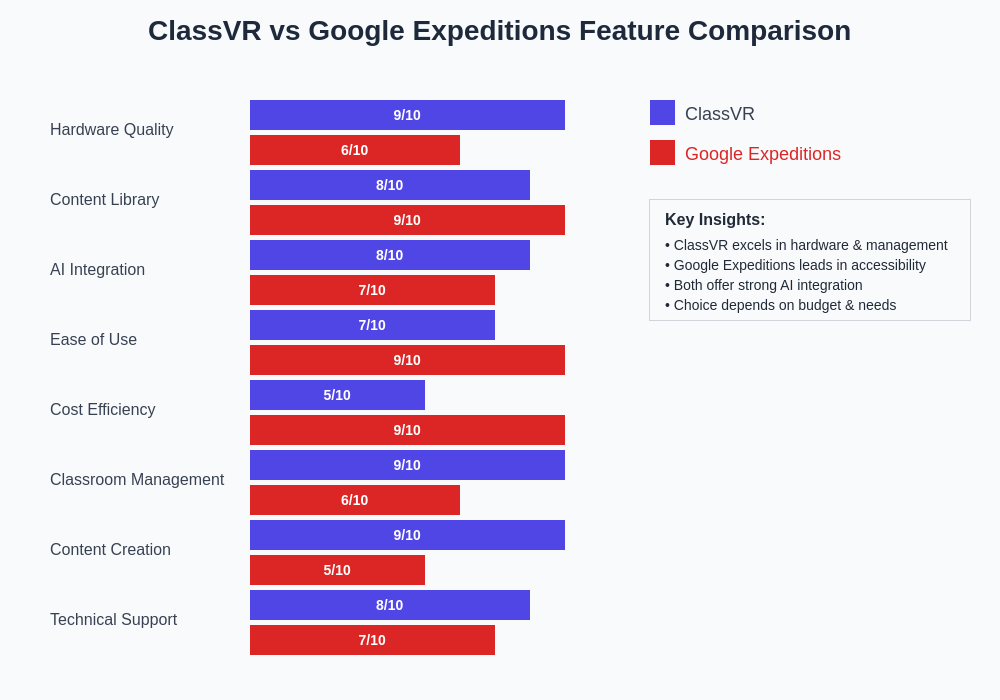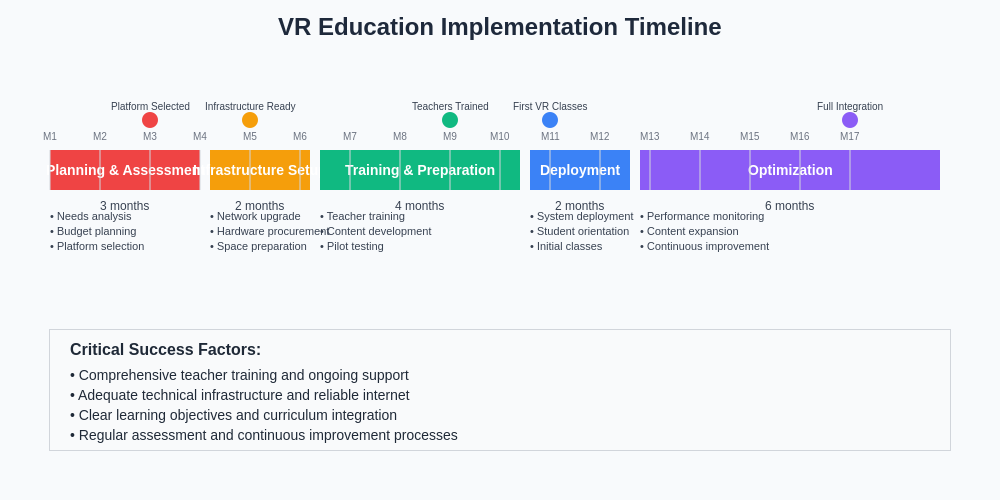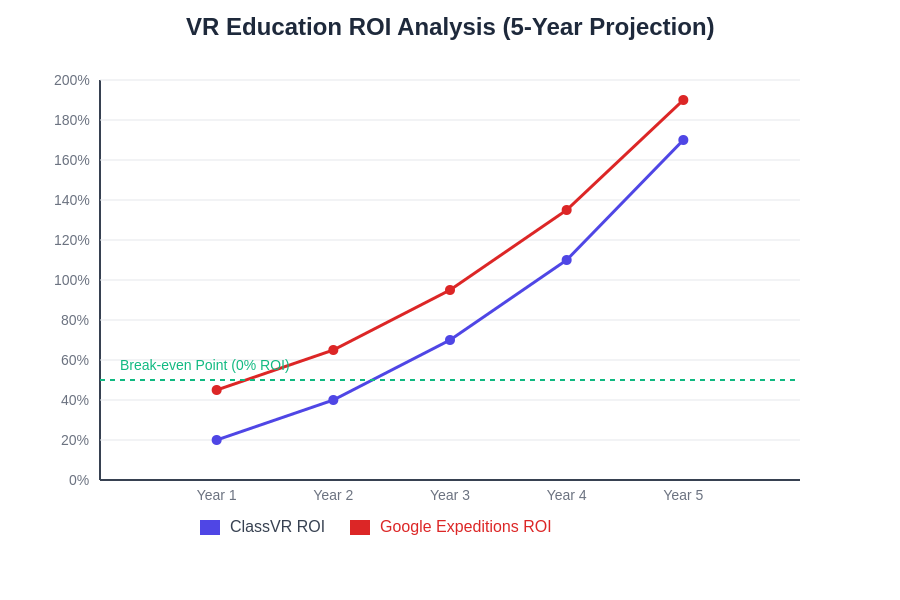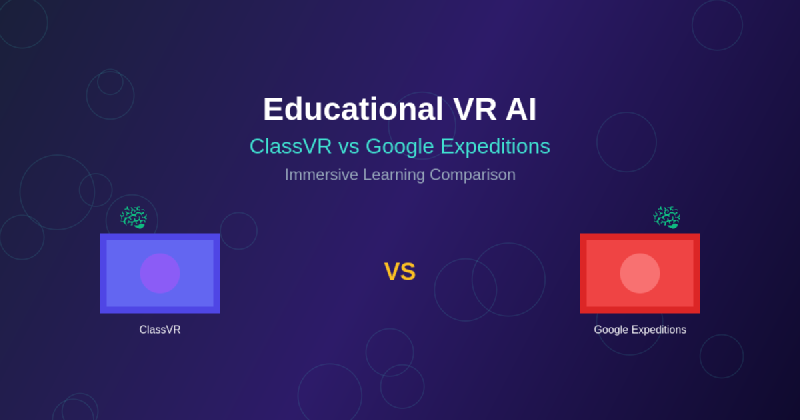The convergence of virtual reality technology and artificial intelligence has fundamentally transformed the educational landscape, creating unprecedented opportunities for immersive learning experiences that transcend traditional classroom boundaries. Among the pioneering platforms leading this educational revolution, ClassVR and Google Expeditions have emerged as prominent solutions, each offering unique approaches to AI-enhanced virtual reality education that promise to revolutionize how students engage with complex concepts and explore distant worlds without leaving their classrooms.
Explore the latest educational AI innovations to discover cutting-edge developments in virtual reality learning technologies that are shaping the future of education. The integration of artificial intelligence with virtual reality represents a paradigmatic shift in pedagogical methodologies, offering educators powerful tools to create personalized, adaptive learning experiences that cater to diverse learning styles and cognitive preferences while maintaining engagement levels that traditional teaching methods often struggle to achieve.
The Evolution of Virtual Reality in Education
The transformation of educational technology has reached a critical inflection point where virtual reality and artificial intelligence converge to create learning environments that were previously confined to the realm of science fiction. Traditional educational approaches, while foundational, often struggle to capture and maintain student attention in an increasingly digital world where learners are accustomed to interactive, multimedia experiences that provide immediate feedback and adaptive content delivery.
Virtual reality technology has addressed these challenges by creating immersive environments where abstract concepts become tangible experiences, historical events become lived realities, and complex scientific phenomena can be observed and manipulated in real-time. The addition of artificial intelligence to these virtual environments has further enhanced their educational potential by providing personalized learning pathways, intelligent tutoring systems, and adaptive assessment mechanisms that respond to individual student needs and learning patterns.
The educational benefits of VR-AI integration extend beyond mere novelty, offering measurable improvements in knowledge retention, conceptual understanding, and student engagement. Research has consistently demonstrated that immersive learning experiences create stronger memory associations, facilitate deeper understanding of spatial relationships, and enable students to develop practical skills in safe, controlled environments where mistakes become learning opportunities rather than costly errors.
ClassVR: Comprehensive Educational VR Ecosystem
ClassVR has positioned itself as a comprehensive educational virtual reality platform specifically designed for classroom implementation, offering a robust ecosystem that combines hardware, software, and content management tools tailored to educational environments. The platform’s approach emphasizes ease of use for educators while providing sophisticated features that enable the creation of immersive learning experiences across multiple subjects and grade levels.
The ClassVR system integrates artificial intelligence capabilities that enhance content delivery through adaptive learning algorithms, personalized content recommendations, and intelligent progress tracking that provides educators with detailed insights into student engagement and comprehension levels. The platform’s AI-driven analytics engine processes learning patterns to identify areas where students may need additional support or challenge, enabling teachers to make data-driven instructional decisions that optimize learning outcomes.
Content creation within the ClassVR ecosystem benefits from AI-powered tools that assist educators in developing virtual experiences without requiring extensive technical expertise. The platform’s intelligent content authoring system provides suggestions for immersive scenarios, automatically generates interactive elements based on learning objectives, and offers real-time feedback on content effectiveness through machine learning algorithms that analyze student interaction patterns.
Experience advanced AI capabilities with Claude for educational content development and personalized learning solutions that complement virtual reality experiences. The integration of sophisticated AI reasoning capabilities with immersive VR environments creates unprecedented opportunities for adaptive educational experiences that respond intelligently to student needs and learning preferences.
Google Expeditions: Democratizing Virtual Field Trips
Google Expeditions emerged as Google’s ambitious initiative to democratize access to virtual reality education by leveraging the company’s extensive technological infrastructure and content creation capabilities. The platform’s fundamental philosophy centers on making high-quality virtual reality experiences accessible to classrooms worldwide, regardless of economic constraints or geographical limitations that might otherwise prevent students from accessing enriching educational experiences.
The Google Expeditions approach to AI integration focuses on content curation and intelligent tour guidance, utilizing machine learning algorithms to analyze vast libraries of 360-degree imagery and virtual environments to create educationally relevant experiences. The platform’s AI systems process contextual information about curriculum standards, student grade levels, and learning objectives to recommend appropriate expeditions and suggest optimal implementation strategies for different educational contexts.
Artificial intelligence within Google Expeditions extends to natural language processing capabilities that enable students to ask questions about their virtual environments and receive contextually appropriate responses. This conversational AI component transforms passive observation into active inquiry, encouraging students to develop critical thinking skills while exploring virtual spaces that range from ancient civilizations to molecular structures.
The platform’s machine learning algorithms continuously analyze usage patterns, student engagement metrics, and learning outcome data to refine content recommendations and improve the overall educational effectiveness of virtual expeditions. This data-driven approach ensures that the platform evolves to better serve educational needs while maintaining the high-quality experiences that have made Google Expeditions a popular choice among educators worldwide.
Comparative Analysis of Platform Features
The fundamental differences between ClassVR and Google Expeditions reflect distinct philosophical approaches to virtual reality education, with each platform offering unique advantages that cater to different educational environments and instructional goals. ClassVR’s comprehensive ecosystem approach provides educators with greater control over content creation and customization, while Google Expeditions emphasizes accessibility and ease of implementation through its streamlined, content-rich platform.
Hardware requirements represent a significant differentiating factor between the two platforms, with ClassVR offering dedicated VR headsets designed specifically for educational use, complete with hygiene considerations, durability features, and classroom management capabilities. Google Expeditions, in contrast, leverages existing smartphone technology and affordable VR viewers, significantly reducing initial investment costs while maintaining accessibility for schools with limited technology budgets.
Content libraries showcase another area of distinction, where ClassVR provides curated educational content specifically designed for curriculum alignment and pedagogical effectiveness, while Google Expeditions offers vast collections of real-world locations and experiences that provide authentic virtual travel opportunities. The AI-powered content recommendation systems in both platforms utilize different approaches, with ClassVR focusing on learning objective alignment and Google Expeditions emphasizing exploration and discovery-based learning.

The feature comparison reveals that both platforms excel in different areas, with ClassVR providing superior classroom management tools and content creation capabilities, while Google Expeditions offers broader content variety and lower implementation barriers. The choice between platforms often depends on specific educational goals, available resources, and institutional technology infrastructure.

The implementation timeline demonstrates the comprehensive planning and execution phases required for successful VR education program deployment. This structured approach ensures that all critical elements are addressed systematically, from initial assessment through full integration and optimization.
Implementation Strategies and Best Practices
Successful implementation of virtual reality education platforms requires careful consideration of pedagogical strategies, technical infrastructure, and teacher training programs that ensure effective integration with existing curriculum frameworks. The most successful VR education initiatives combine thoughtful preparation with flexible implementation approaches that allow for iterative improvement based on student feedback and learning outcome assessments.
Pre-implementation planning should address technical requirements, content alignment with educational standards, and teacher professional development needs that enable confident and effective use of VR technology in classroom settings. Both ClassVR and Google Expeditions provide extensive training resources and support materials, but the most successful implementations supplement these resources with hands-on practice opportunities and peer collaboration networks that foster confidence and creative application of VR technologies.
Classroom management strategies for VR education require adaptation of traditional approaches to accommodate the unique challenges and opportunities presented by immersive learning environments. Effective VR education implementation involves establishing clear protocols for device usage, creating structured exploration activities, and developing assessment strategies that capture both traditional learning outcomes and the unique benefits of immersive experiences.
Enhance your research capabilities with Perplexity to stay current with emerging VR education research and implementation best practices that inform effective program development. The rapidly evolving nature of VR education technology requires continuous learning and adaptation to ensure that implementation strategies remain current and effective.
Learning Outcomes and Educational Effectiveness
Research into the educational effectiveness of virtual reality platforms has consistently demonstrated significant improvements in student engagement, knowledge retention, and conceptual understanding across diverse subject areas and grade levels. The immersive nature of VR experiences creates memorable learning events that facilitate long-term retention while providing opportunities for experiential learning that traditional methods cannot replicate.
Quantitative studies comparing VR-enhanced instruction with traditional teaching methods have revealed substantial improvements in test scores, project quality, and student motivation levels. The AI-powered analytics capabilities of both ClassVR and Google Expeditions provide educators with detailed insights into student learning patterns, enabling data-driven instructional decisions that optimize educational outcomes while identifying students who may benefit from additional support or challenge.
Qualitative assessments of VR education programs consistently highlight increased student enthusiasm for learning, improved collaboration skills, and enhanced spatial reasoning abilities that transfer to other academic areas. The ability to visualize complex concepts in three-dimensional space has proven particularly beneficial for subjects such as science, mathematics, and history, where abstract or distant concepts can be made tangible through virtual experiences.
Long-term impact studies suggest that students who participate in VR education programs demonstrate sustained improvements in critical thinking skills, technological literacy, and adaptability to new learning environments. These benefits extend beyond immediate academic performance to include improved preparation for future educational and professional environments where technological fluency and innovative thinking are increasingly valued.
Technical Infrastructure and Requirements
The technical infrastructure requirements for implementing VR education platforms vary significantly between ClassVR and Google Expeditions, reflecting their different approaches to hardware utilization and content delivery. ClassVR’s dedicated hardware ecosystem requires substantial initial investment but provides optimized performance and features specifically designed for educational environments, including robust device management capabilities and enhanced durability features.
Network infrastructure considerations are critical for both platforms, as VR content delivery requires reliable, high-bandwidth internet connections that can support simultaneous access by multiple users without degrading the immersive experience quality. Schools implementing VR education programs must evaluate their existing network capacity and may need to upgrade infrastructure to ensure optimal performance during class activities.
Device management and maintenance represent ongoing considerations that affect the long-term success of VR education programs. ClassVR’s integrated management platform provides comprehensive tools for device monitoring, content distribution, and usage analytics, while Google Expeditions relies on existing device management solutions and may require additional third-party tools for comprehensive classroom technology management.
Technical support and troubleshooting capabilities differ between platforms, with ClassVR offering dedicated educational technology support services and Google Expeditions leveraging Google’s broader support infrastructure. The availability of local technical expertise and the institution’s existing relationship with technology vendors may influence platform selection decisions.
Cost Analysis and Return on Investment
The financial considerations surrounding VR education implementation extend beyond initial hardware and software costs to include ongoing maintenance, training, and content licensing expenses that affect the total cost of ownership over the program’s lifetime. ClassVR’s comprehensive platform approach typically involves higher upfront costs but may provide better long-term value through integrated support services and specialized educational features.
Google Expeditions’ smartphone-based approach significantly reduces initial hardware investment requirements, making VR education accessible to schools with limited technology budgets. However, the long-term costs associated with device replacement, content access, and additional software licensing should be considered when evaluating the total cost of ownership for different platform options.
Return on investment calculations for VR education programs should consider both quantitative metrics such as improved test scores and graduation rates, as well as qualitative benefits including increased student engagement, improved teacher satisfaction, and enhanced institutional reputation. The long-term benefits of preparing students for technology-rich future environments may justify significant initial investments in comprehensive VR education platforms.
Funding strategies for VR education implementation often involve combination approaches that include federal and state education technology grants, private foundation funding, and community partnerships that help offset initial costs while building sustainable support networks for ongoing program development.

The return on investment analysis demonstrates that while initial costs vary significantly between platforms, both ClassVR and Google Expeditions can provide substantial educational value when implemented thoughtfully with appropriate support and training programs.
Future Developments and Industry Trends
The trajectory of VR education technology points toward increasingly sophisticated AI integration, improved hardware capabilities, and expanded content libraries that will further enhance the educational potential of immersive learning environments. Emerging developments in haptic feedback technology, eye tracking, and brain-computer interfaces promise to create even more engaging and personalized educational experiences.
Artificial intelligence advances in natural language processing, computer vision, and predictive analytics will enable more sophisticated virtual tutoring systems, intelligent content adaptation, and personalized learning pathway recommendations that respond to individual student needs in real-time. The integration of these AI capabilities with VR environments will create unprecedented opportunities for adaptive, responsive educational experiences.
Industry consolidation and partnership developments may reshape the competitive landscape for VR education platforms, potentially leading to integrated solutions that combine the strengths of different providers while addressing current limitations in content variety, technical support, and implementation complexity.
The growing emphasis on STEM education, digital literacy, and 21st-century skills development positions VR education as an increasingly critical component of comprehensive educational programs that prepare students for success in technology-rich future environments. Educational institutions that invest early in VR technology implementation may gain significant competitive advantages in student recruitment, retention, and outcomes.
Security and Privacy Considerations
The implementation of VR education platforms raises important questions about student data privacy, content security, and digital safety that educational institutions must address through comprehensive policies and technical safeguards. Both ClassVR and Google Expeditions have implemented privacy protection measures designed to comply with educational data protection regulations, but institutions must evaluate these protections against their specific privacy requirements and local regulations.
Data collection practices within VR education platforms require careful consideration, as immersive environments can gather detailed information about student behavior, learning patterns, and interaction preferences that may be sensitive or personally identifiable. Educational institutions should establish clear policies regarding data collection, storage, and usage that protect student privacy while enabling the educational benefits of AI-powered analytics.
Content filtering and age-appropriate access controls represent critical safety considerations for VR education implementation, particularly given the immersive nature of virtual environments that may present content or experiences inappropriate for certain age groups. Both platforms provide content filtering capabilities, but educators must remain vigilant about content appropriateness and establish clear guidelines for student VR usage.
Cybersecurity considerations for VR education platforms include network security, device management, and content delivery protection that prevent unauthorized access to educational systems and student data. Regular security audits, software updates, and staff training programs help maintain robust security postures that protect institutional and student interests.
Professional Development and Training Programs
The successful implementation of VR education technology depends heavily on comprehensive professional development programs that prepare educators to effectively integrate immersive learning experiences with traditional pedagogical approaches. Both ClassVR and Google Expeditions offer extensive training resources, but the most successful implementations supplement vendor training with ongoing professional development opportunities and peer collaboration networks.
Training program design should address both technical competency development and pedagogical strategy integration, ensuring that educators understand not only how to operate VR equipment but also how to design effective learning experiences that leverage the unique capabilities of immersive environments. Successful training programs provide hands-on practice opportunities, collaborative planning sessions, and ongoing support networks that build confidence and competency over time.
Change management strategies for VR education implementation require careful attention to educator concerns, institutional culture, and gradual implementation approaches that allow for iterative improvement and adaptation. Early adopter programs, pilot implementations, and success story sharing can help build institutional support for broader VR education adoption.
Assessment and evaluation of professional development effectiveness should include both educator confidence measures and student learning outcome improvements that demonstrate the impact of training investments on educational quality. Regular program evaluation and continuous improvement processes ensure that professional development programs remain current and effective as technology and pedagogical understanding evolve.
The landscape of virtual reality education continues to evolve rapidly, with ClassVR and Google Expeditions representing important milestones in the development of accessible, effective immersive learning technologies. While each platform offers distinct advantages and serves different educational contexts, both demonstrate the transformative potential of combining virtual reality with artificial intelligence to create engaging, effective learning experiences that prepare students for success in an increasingly digital world.
The choice between ClassVR and Google Expeditions ultimately depends on specific institutional needs, available resources, and educational objectives, but both platforms offer viable pathways for integrating immersive technology into educational programs. As VR education technology continues to mature and costs decrease, these platforms will likely become increasingly accessible to educational institutions worldwide, democratizing access to high-quality immersive learning experiences that were once available only to well-funded institutions.
The future of VR education lies not in the replacement of traditional teaching methods but in the thoughtful integration of immersive technologies that enhance and complement existing pedagogical approaches. Success in this integration requires ongoing commitment to professional development, technical infrastructure investment, and pedagogical innovation that leverages the unique strengths of virtual reality while maintaining focus on fundamental educational goals and student success outcomes.
Disclaimer
This article is for informational purposes only and does not constitute professional educational or technology advice. The views expressed are based on current understanding of VR education technologies and their applications in learning environments. Educational institutions should conduct thorough evaluations of their specific needs, resources, and objectives when considering VR education platform implementation. The effectiveness of VR education programs may vary depending on implementation quality, institutional support, and individual student characteristics.
